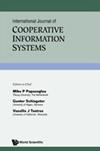新西兰奥特罗阿州公共部门领导的种族(薪酬)差异
IF 0.5
4区 计算机科学
Q4 COMPUTER SCIENCE, INFORMATION SYSTEMS
International Journal of Cooperative Information Systems
Pub Date : 2020-08-21
DOI:10.5204/ijcis.v13i1.1331
引用次数: 4
摘要
新西兰政府对平等就业做法有长期的政策承诺。近年来,人们很少关注种族薪酬差异。根据一系列官方信息法要求,我们有兴趣了解在核心公共部门和地区卫生委员会内部存在多大程度的种族薪酬差异。我们使用线性回归分析,研究了2001年至2016年间,Māori、帕西菲卡和其他种族在五年内收入超过10万新西兰元的人口比例。分析显示,在公共部门,种族薪酬差异的统计模式非常显著。卫生保健区雇用的Māori和帕西菲卡族工作人员少于其人口比例。未能将Māori和Pasifika提升到公共部门的上层,符合体制种族主义的定义。作者呼吁进行更多的研究,以了解种族薪酬差异的动态以及这种差异的驱动因素。本文章由计算机程序翻译,如有差异,请以英文原文为准。
Ethnic (pay) disparities in public sector leadership in Aotearoa New Zealand
New Zealand Governments have longstanding policy commitments to equal employment practices. Little attention has been paid to ethnic pay disparities in recent years. Informed by a series of official information act requests, we were interested to find out what extent, ethnic pay disparities existed within the core public sector and district health boards (DHBs). We examined the population proportions of Māori, Pasifika and Other ethnicities earning over $NZ100,000 over five year intervals between 2001 to 2016, using linear regression analysis. The analyses showed a statistically significant pattern of ethnic pay disparities across the public sector. There were fewer Māori and Pasifika staff employed in DHBs than their population proportion. The failure to promote Māori and Pasifika to the upper tiers of public sector is consistent with definitions of institutional racism. The authors call for more research to understand the dynamics of ethnic pay disparity and the drivers of this disparity.
求助全文
通过发布文献求助,成功后即可免费获取论文全文。
去求助
来源期刊

International Journal of Cooperative Information Systems
工程技术-计算机:信息系统
CiteScore
2.30
自引率
0.00%
发文量
8
审稿时长
>12 weeks
期刊介绍:
The paradigm for the next generation of information systems (ISs) will involve large numbers of ISs distributed over large, complex computer/communication networks. Such ISs will manage or have access to large amounts of information and computing services and will interoperate as required. These support individual or collaborative human work. Communication among component systems will be done using protocols that range from conventional ones to those based on distributed AI. We call such next generation ISs Cooperative Information Systems (CIS).
The International Journal of Cooperative Information Systems (IJCIS) addresses the intricacies of cooperative work in the framework of distributed interoperable information systems. It provides a forum for the presentation and dissemination of research covering all aspects of CIS design, requirements, functionality, implementation, deployment, and evolution.
 求助内容:
求助内容: 应助结果提醒方式:
应助结果提醒方式:


